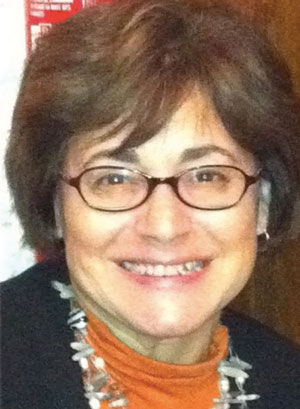AIPAC highlights went far beyond candidates’ visits
Published March 30, 2016
More than 18,000 people attended the American Israel Public Affairs Committee (AIPAC) Policy Conference in Washington last week.
Perhaps you heard about it, or caught it on CNN or NBC, or read about it in The Washington Post or The Jerusalem Post or the Jewish Light.
Why was AIPAC’s annual meeting such a big deal this year? Because it was big — the biggest ever. So big it could no longer be contained within the Walter E. Washington Convention Center, which spans roughly six football fields. General sessions were held in the Verizon Center, Washington’s basketball arena. And the seats were filled. I was in one of them.
The other reason for the attention, of course, was Donald Trump. His address to AIPAC was the first of his campaign to be delivered from a prepared text.
Before the conference began, many wondered whether AIPAC should invite Trump and how he would be received. We were in for some surprises.
Given his previous comments about remaining neutral on Israeli-Palestinian issues, it seemed unlikely that he would be welcome at the pro-Israel gathering. But AIPAC invited all of the presidential candidates to address the conference and only Bernie Sanders declined (though he did offer to speak remotely).
Of course, support for Israel is not limited to Jews. At AIPAC, various groups are represented, including Christians, African-Americans, Latinos and American veterans. Four thousand high school and college students also came to the conference. These communities, which often overlap with traditional AIPAC constituencies, seemed unlikely to support the divisive comments Trump has made during his campaign.
So what happened?
Trump entered the hall to moderate applause but nothing like the thunderous ovations given to Democrat Hillary Clinton in the morning and Ohio’s Republican governor, John Kasich, earlier that evening. I saw one protester, draped in his tallit, rushed from the hall as he yelled something inaudible. According to accounts I read later, the protester was Modern Orthodox Rabbi Shmuel Hertzfeld of Washington. He shouted, “Do not listen to this man. He is wicked. He inspires racists and bigots.”
But as Trump spoke, something came over the crowd. He was a showman. As his repeated interjection — “Believe me” — began to punctuate his remarks, he earned laughter, but not ridicule. AIPAC audiences are polite. We follow instructions to treat every speaker like a guest in our homes, so I did not hear any booing.
And then the crowd began to express approval for Trump’s pro-Israel statements, such as moving the U.S. Embassy to Israel, from its current location in Tel Aviv to Jerusalem, with the applause such statements always receive. Many people did not seem to worry whether Trump would reverse his statements in an hour or a day, as he has been known to do.
There were reports of the crowd being swept away in Trump enthusiasm. But from where I sat — silently, on my hands the entire time — I saw my husband next to me and the people down our row and the people across the aisle and behind us all doing the same. I suppose enough people were standing that you couldn’t see all the sitters. Their applause drowned out our silence.
The next morning, AIPAC’s new president, Lillian Pinkus, issued her heartfelt apology to President Barack Obama for the perception that AIPAC condoned insults to him and his office. She had in mind Trump’s comments that Obama may be “the worst thing to have ever happened to Israel.” Everybody there stood and applauded her statement.
We also applauded much more. We heard from entrepreneurs and scientists who are making the advances Israel is famous for in medicine and technology. We heard about Jewish and Arab Israeli children who further the cause of peace through baseball.
We ascended Capitol Hill for meetings with lawmakers. Our 78-member St. Louis delegation, the largest we have ever sent, included two members of AIPAC’s African-American Leadership, 13 college students and 10 high school students who have participated in the Movitz-Danforth Israel Scholars Program of the Jewish Student Union. In many of the meetings, our students presented our positions. There was a lot to be proud of. Most of all, we felt the pride of being Americans participating in our democracy.
And we were awed by the conviction and bravery of a true hero, Master Sgt. Roddie Edmonds, who fought in World War II. With a gun to his head, he stood up to his Nazi captors and saved the lives of nearly 200 Jewish soldiers. Edmonds’ son, the Rev. Chris Edmonds of Maryville, Tenn., told us how his father, the highest-ranking noncommissioned officer at the POW camp, responded when his tormentor demanded that he identify the Jewish soldiers among the 1,200 men he led: “We are all Jews here,” Sgt. Edmonds had said.
Most movingly (if that is possible), we met Krizel, a young blind girl who was abandoned at birth. She is one of more than 1,000 at-risk Israeli children from all backgrounds who participate in a rehabilitative initiative of the Israeli Philharmonic Orchestra and Tel Aviv University.
With breathtaking power, this young girl began to sing “There’s a Place for Us,” the anthem of hope from the musical “West Side Story.” She gave voice to the at-risk children. She gave voice to the Jewish people. There is a place for us: Israel.
AIPAC keeps it secure. And that’s why I was there last week.















